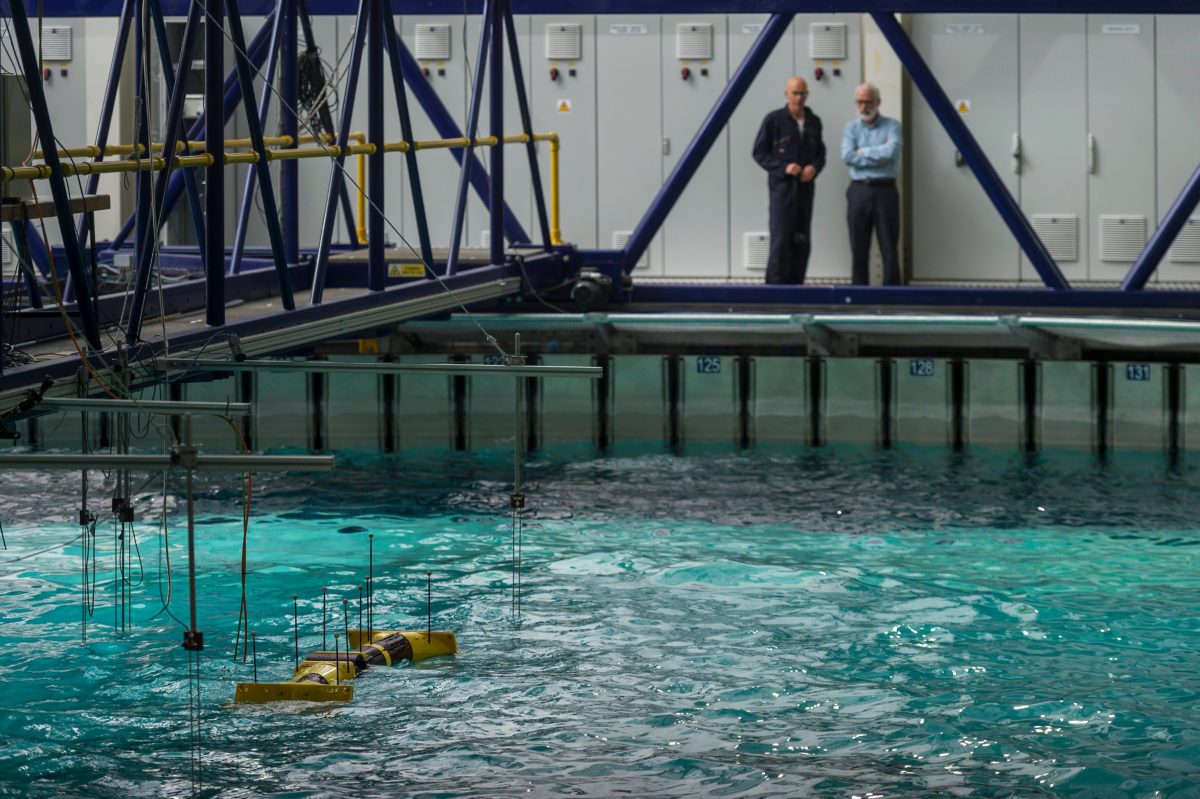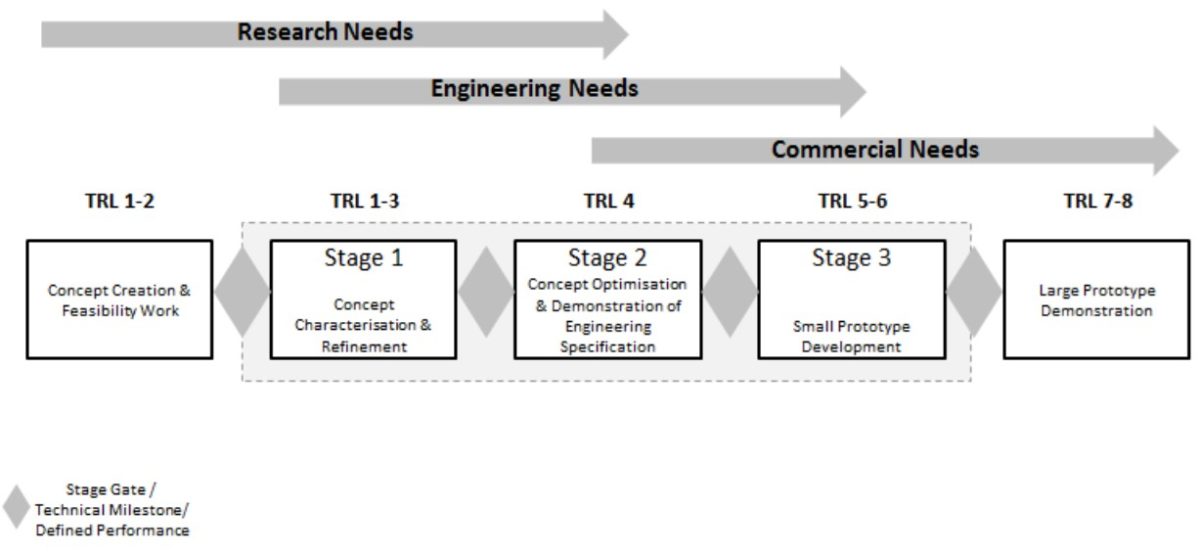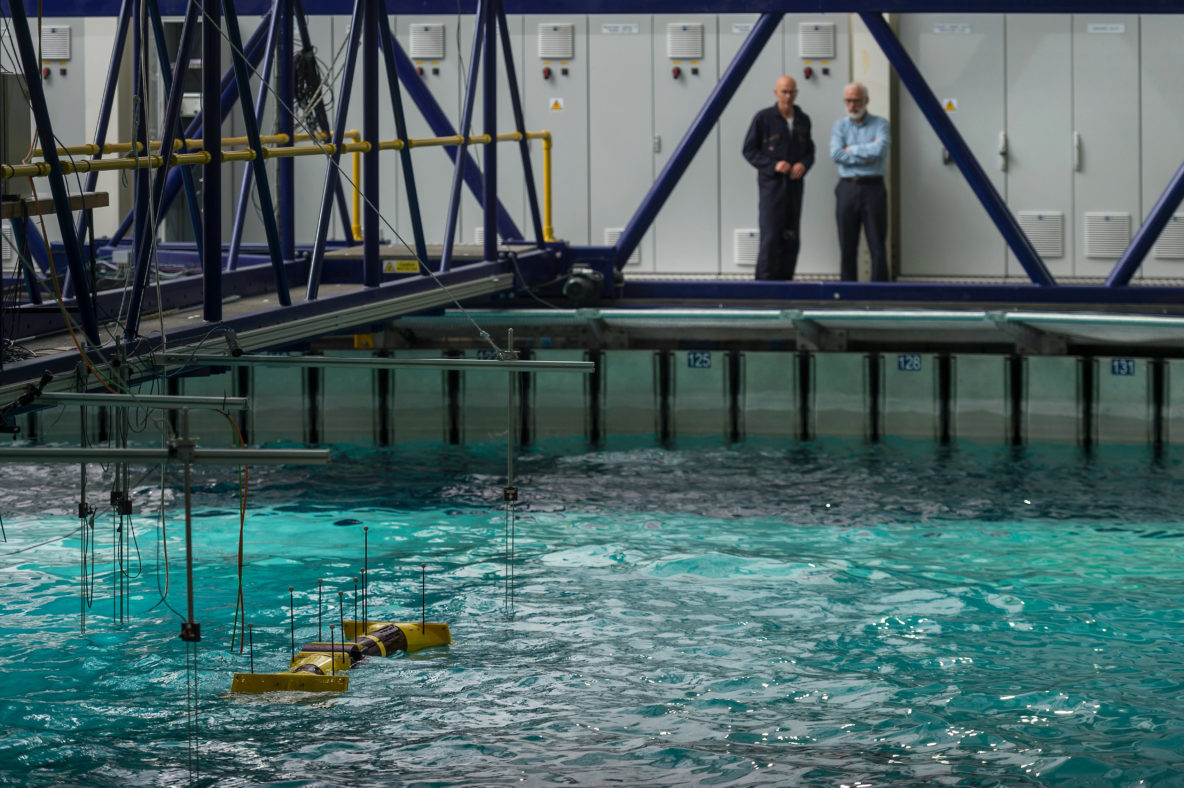29 November 2019
With the Wave Energy Scotland Annual Conference coming up, the fourth that WES has held and the fourth that Mocean will attend, company co-founder and managing director Cameron McNatt reflects on Mocean’s expereince in the WES programme.

Have you ever been waiting to find out something really important, something that would change your life, and with the assumption that one result would be great, and one would be bad?
There’s a feeling in the pit of your stomach, an anxiety that can be oppressive.
It’s a situation that is made worse when you’re surrounded by people, and by people that know you’re waiting on the decision, and by people that may even know the result… know your fate.
At last year’s Wave Energy Scotland Annual Conference, that was exactly how I felt.
Mocean Energy had submitted its application to move from the WES Novel WEC (NWEC) Stage 2 programme to the Stage 3 programme, which came with an award of £3.3m.
Despite our best efforts to have a backup plan if we didn’t get the WES funding, co-founder Chris Retzler and I had no fall back. If we didn’t get the funding, it would have been the end of Mocean Energy. I would have been out of a job with a wife and three kids. And Chris would have been affected, and Andrea our IDCORE student, and Gabriel who we’d promised a job.
But this year’s WES conference will be much more relaxing. Mocean Energy was extremely fortunate; we were awarded the NWEC Stage 3 funding and are halfway through our prototype build and test programme – fabrication is ongoing; the WEC will be launched in the spring and tested over the summer.
I don’t blame WES for the situation – hanging-by-a-thread scenarios are part of being a startup, and it’s the path we chose. I just wanted to give a sense of the emotional experience, and I’d like to tell you more about our experience in the WES programme in as honest a way as I can.

WES uses a unique technology evaluation system that gives space for innovation.
As far as I know, Wave Energy Scotland is unique as a funding body focused on a specific technology sector and staffed by sector experts. WES personnel have outstanding credentials in wave energy and related industries spanning disciplines from technical to strategic. Many worked at wave energy companies themselves. And they all share a passion to grow wave energy into a commercially viable industry.
WES created a stage gate process that enables a thorough and third-party evaluation of technologies throughout their development lifecycle; see above figure.
For example, the Novel WEC programme began with a European-wide call for applications for Stage 1. Those applications were evaluated by WES staff and external experts to select eight companies for Stage 1, which could be characterized as “R&D and Concept Engineering”. Between Stage 1 and Stage 2, there was a stage gate in which the eight Stage 1 companies submitted application packs for Stage 2 that covered the results of Stage 1, the development plan for Stage 2, and technical and commercial ambitions.
Again, the stage gate applications were evaluated by WES and third-party experts. Four companies were selected for NWEC Stage 2, which was roughly speaking a “FEED” (front end engineering design). At the end of Stage 2, the stage gate process was repeated to select two companies to enter Stage 3, which consists of the build and testing of a sea-going prototype.
Technology development in any field, and perhaps in particular wave energy, feels the pull of somewhat conflicting drivers:
- Develop the best technology – this takes time and is often driven by technologists.
- Develop the technology fast – this reduces time to market and is often driven by investors.
(For a more thorough description, see Jochem Weber’s work on Technology Performance Levels.)
WES aims to support path 1 – best technology. They fund promising early-stage development, and while their programmes have structure and objectives, you design your own work programme around that. This gave us funding to develop our technology when it was only a rough concept, and it allowed us to develop it our own way – we focus on numerical optimisation to produce new geometries, and throughout the stages, we’ve incorporated three major design optimisations, giving us the opportunity for continual improvement.
However, the WES programme also has its own rigidity. Each stage has a pre-set time limit, and at the end of a stage, developers have no choice but to move up in TRL; there’s not funding to repeat a stage. You can imagine that in some circumstances, a great technology may not have been quite ready to move up and needed a bit more time in early design. And if we had been left to our own devices, we would have spent more time at early stages ourselves.
This is the trade-off, development speed is driven by commercial considerations, and this isn’t necessarily a bad thing. WES has its own customers: the Scottish Government and the Scottish people – it needs to show progress and the best way to do this is to “put steel in the water.”
The WES funding mechanism positions companies for commercial development and investment.
But the same is true for Mocean Energy– the WES Stage 3 prototype build and test programme has been instrumental for us to get commercial traction. It is much easier to speak to potential customers when you can say, we are building a prototype now, which will take us to TRL 6.
The WES programme uses a funding mechanism called “pre-commercial procurement” – and the key benefit of this is that WES can fund 100 percent of a technology development project. In contrast, most other public funding supports a percentage of a project (e.g. 30-70 percent), which means that the funded company must invest some its own budget or bring in external investment.
As far as I know, WES’s 100 percent funding support is unique to technology development funding (aside perhaps from defence and space programmes). This funding mechanism was absolutely essential to Mocean Energy being launched as a company. In 2015, when Mocean Energy was founded and when we applied for the WES Novel WEC Stage 1 funding, wave energy companies, Pelamis and Aquamarine Power had just collapsed after receiving millions in investment over many years. There was no way that Mocean Energy could have attracted investment to match grant funding.
WES and the Scottish Government took a necessary risk, but it paid off. The situation for wave energy today is vastly different than it was in 2015. Mocean are engaged with an exciting emerging market segment within oil and gas as part of its energy transition; we are building a sea-going prototype that is one step away from a commercial product. And as we near the end of our WES journey, we are preparing for seed investment which will help transform us from an R&D company to a commercial operation.
It is easy to speak highly of WES when we have been successful in the programme, but we think that the WES programme and the support from the Scottish Government have given wave energy another chance. We are extremely grateful, and we hope to do our part in creating a viable wave energy industry.

